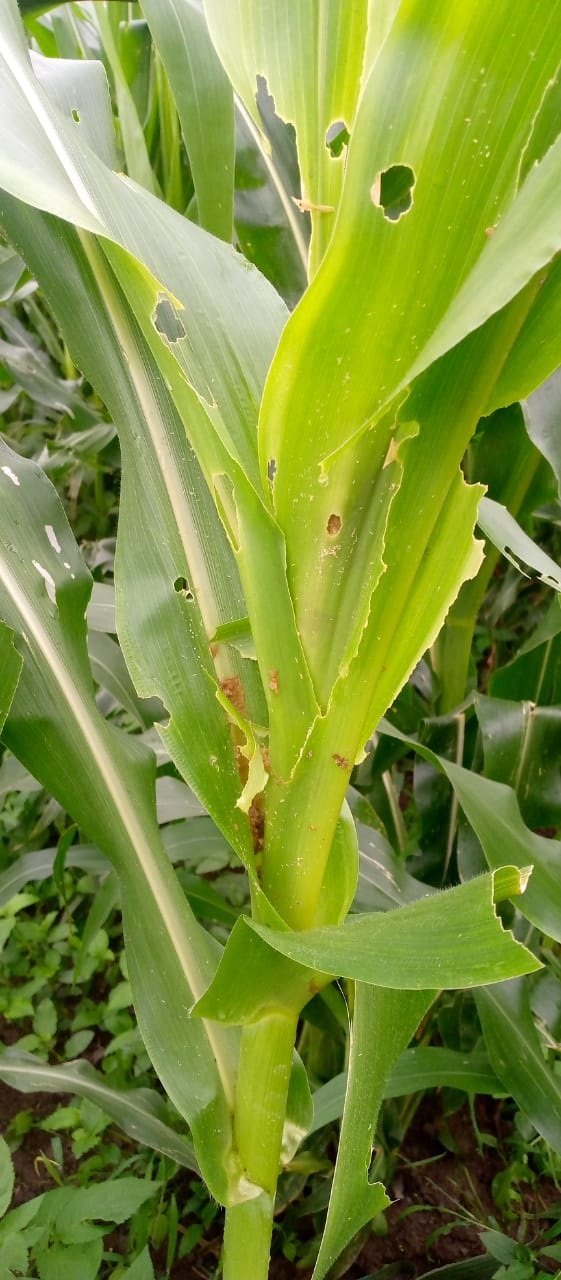
The pest-infested maize crop at a village in Solan district.
Ambika Sharma
Tribune News Service
Solan, July 23
Maize growers in Solan district are facing 15 to 20 per cent loss of crop due to pest fall armyworm infestation in various parts of the district.
Maize is grown over 23,600 hectares in various parts of Solan and around 8,967 hectares have registered 15 to 20 per cent infestation in areas such as Kunihar, Ramshehar, Nalagarh, Barotiwala, Saiyri, and Mashibar.
“Cases of pest infestation were reported in the district about a month ago due to a dry weather. Affected farmers have been advised to take remedial steps, including the use of organic pesticides such as neem as well as chemical pesticides in cases where infestation is severe. The situation has improved after rains and the field staff is keeping a close watch in such areas,” says Rajesh Kaushik, Deputy Director, Agriculture.
Around 62,000 metric tonnes of maize is grown in the district. The pest infestation causing a substantial loss to crops was also reported last year.
The Krishi Vigyan Kendra (KVK) of Dr YS Parmar University of Horticulture and Forestry, Nauni, has also stepped in to help farmers in the management of this pest. This insect is native to the tropical and subtropical regions of America but it has been reported in the maize-growing areas of Solan since last year.
Jitender Kumar Chauhan, Principal Scientist and Head of the KVK, Solan, says that they have been active since last year and have conducted various farm trails to control this pest with flubendiamide insecticide, and demonstration of light traps for pest surveillance and the trapping of adults are being conducted by Anurag Sharma, a scientist of entomology.
This year also, solar traps have been distributed to farmers at Dadal village in Kunihar block and various diagnostic visits have been made to fields by scientists led by Sharma.
“The scientists are creating awareness among farmers about the life cycle and nature of damage caused by this insect-pest and suggesting various management practices for it,” says Sharma.
“The use of light traps from 6 pm to 10 pm should be done by farmers to trap adult moths, which will be helpful in reducing egg laying. Other measures like using pheromone traps to attract male adults to disturb mating and hence reduce egg laying are also advised,” says Sharma.
He adds that an integrated approach, which also includes deep ploughing after the harvesting of crop to expose pupae to birds and sun, will help in reducing the incidence of the pest, which is slated to cause damage in the coming years as well.
Join Whatsapp Channel of The Tribune for latest updates.



























